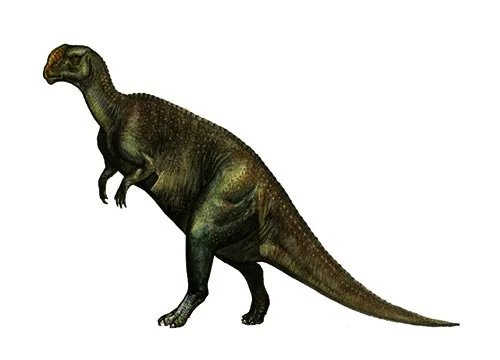Kritosaurus (Seperated lizard)

Krit-o-sore-us
Barnum Brown - 1910
Herbivore
Estimated 9 meters long
Euornithopod
K. navajovius (type)
Argentina, USA - New Mexico - Kirtland Formation
Late Cretaceous, 74-67 million years ago
Kritosaurus Facts
Kritosaurus is a genus of hadrosaurid dinosaur that lived during the Late Cretaceous period, around 74-67 million years ago. It is known from fossils found in North America, including the states of Montana, South Dakota, and Wyoming.
The name Kritosaurus means “separated lizard” in reference to the separation of the nasal bones on the top of its skull. This feature is a defining characteristic of the genus and distinguishes it from other hadrosaurids. Kritosaurus had a broad, flat snout with a slight downward curve at the front.
Kritosaurus was a relatively large hadrosaurid, reaching lengths of up to 9 meters (30 feet) and weights of around 4-5 metric tons. It had a long, flat tail that was likely used for balance, and powerful hind legs that allowed it to move quickly on land. Its front limbs were shorter and less robust, and were likely used for support and balance while feeding.
Like other hadrosaurids, Kritosaurus was a herbivore, feeding on a variety of plants such as ferns, horsetails, and conifers. Its teeth were continuously replaced throughout its life, and it likely had hundreds of teeth in its jaws at any given time. These teeth were arranged in rows, and were used to grind and process tough plant material.
Kritosaurus lived during the Late Cretaceous period, alongside a diverse array of other dinosaurs including tyrannosaurs, ceratopsians, and other hadrosaurids. Its fossils have been found in deposits that were once part of the Western Interior Seaway, a shallow sea that divided North America into eastern and western landmasses during the Late Cretaceous.
Despite the fact that it is relatively well-known from fossils, there is still much to be learned about Kritosaurus and its life in the Late Cretaceous. Ongoing research on its anatomy, ecology, and evolutionary relationships is helping to shed new light on this fascinating dinosaur and the world in which it lived.



